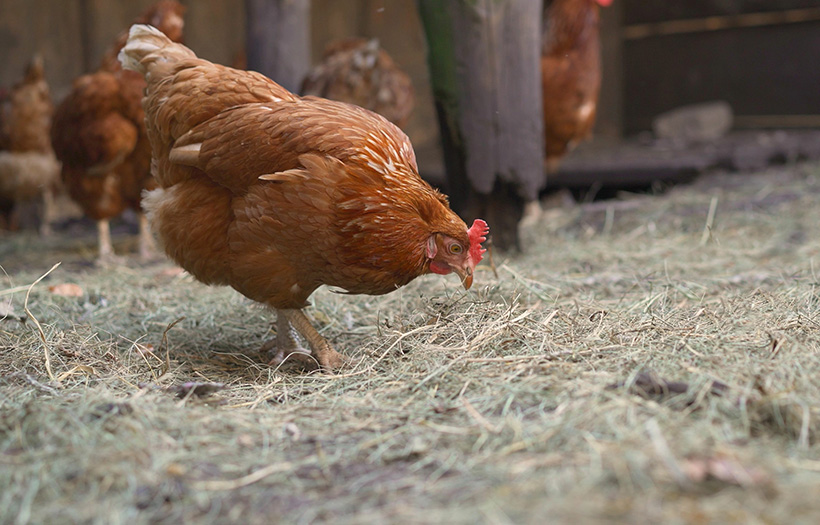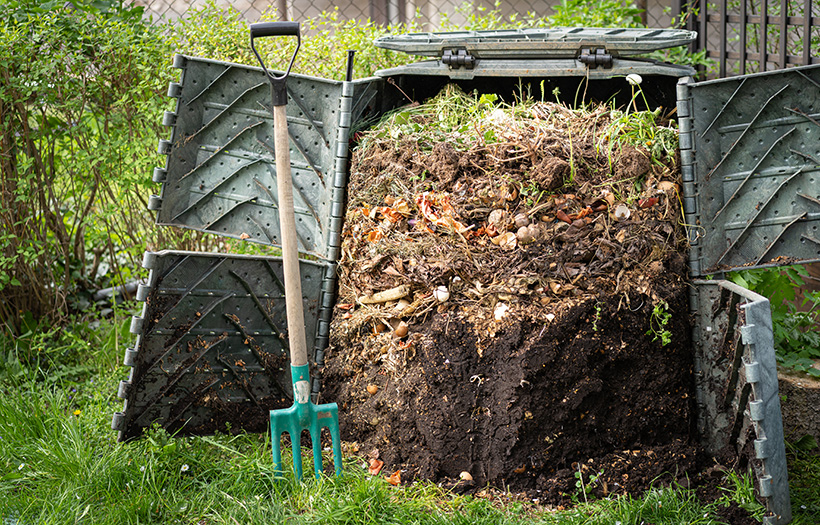How to Choose the Best Bedding for Your Chickens

By Jennifer Murtoff, Home to Roost, LLC
Bedding (or litter) is an important factor in the life of your chickens; after all, they’ll spend most of their lives walking on it! What characteristics are important in choosing bedding, and which kinds of bedding work best?
Understanding the Importance of Chicken Bedding: Essential Insights
First, let’s look at why bedding is important for your chickens. Litter helps absorb moisture from droppings, reducing odors. Chickens scratch in the bedding, turning the droppings under it and helping to keep the coop clean. In cold climates, loose bedding traps heat and insulates the floor. Litter also cushions your birds when they jump down from the roost and eggs when they are laid in the nest box.
Characteristics of Ideal Chicken Bedding: What to Look For
Qualities of good bedding include the following:
- Absorbent: sucks up moisture from droppings and other sources
- Economical: easy on the wallet
- Easy maintenance: can be placed and removed with little effort
- Soft: cushions your birds’ landings and eggs and provides a comfortable surface to walk on
- Insulating: traps heat, especially important for in cold climates
- Compostable: breaks down easily in a compost pile or in place
- Quick drying: doesn’t retain moisture from droppings, rain, or spilled water
- Resistant to packing or matting: stays loose with minimal effort
- Chemical free: has no harmful pesticides, preservatives, or other additives
- High in carbon: breaks helps reduce or prevent odors from droppings; generally dry, brown materials
Exploring Different Types of Chicken Bedding: Pros and Cons
When it comes to bedding, there are a number of different choices. However, they’re not all created equal. Let’s have a look at some of them.
Let’s have a look at some of them.
- Wood shavings
Shavings can last as many as four months and provide high-carbon material for compost. Large shavings resist compaction better than fine shavings and kiln drying kills any mold or harmful microbes. Wood shaving are popular but there are controversies. Cedar should never be used because it contains toxins that can affect your birds’ livers and irritate their sensitive respiratory systems. - Straw
This hollow grass is a good insulator. Unlike hay, which is food for animals, straw is not edible. Straw may, however, contain bits of grass seed that your chickens will enjoy finding (but make sure that your birds are not eating the straw itself!). Chopped straw is more absorbent, but it does not release moisture well and may mat up. Wet straw is hard to shovel, and mold and bacteria may grow in it. If you choose straw, it should be turned to prevent matting and molding. - Hemp
This bedding is the stems of the cannabis plant. It is more absorbent than wood shavings and straw and is less expensive and softer. However, it may harbor bacteria. Hemp litter also can help with odor reduction, produces very little dust, and is a high-carbon material that breaks down quickly in compost. - Sand
Coarse construction sand (not play sand) may be a good bedding option. The material drains well and is very economical because it does not need to be replaced often. However, it should be cleaned at least weekly. Unlike other materials, sand does not compost. It also may cause digestive issues if the birds eat too much of it. - Natural bedding
Natural materials like leaves and pine needles are lightweight and free and may include insects. However, like straw, there is the risk of mold, moisture build-up, and matting up. You’ll have to replace natural bedding every 2 to 3 months. If these materials are completely dry, they will serve as high-carbon materials. - Shredded paper
This might seem like a great litter option, but it’s too absorbent and doesn’t dry out well. So you’ll end up with a matted mess that may breed mold and will have to be replaced more often. Although paper is high carbon, the inks and dyes may make your chickens sick and should not go into your compost bin. - Grass clippings
These are free and contain bugs and seeds but are not very absorbent. Grass should be dried out completely on a tarp. Grass that is not dried completely can mold and is not a high-carbon material. Also avoid grass from chemically treated lawns.
Avoiding Unsuitable Chicken Bedding: Key Considerations
Just say NO to the following!
- NO sawdust. It’s too fine and your birds may eat it, leading to crop impaction.
- NO pressure-treated lumber. It contains unhealthy chemicals.
- NO cedar. The odors produced by this wood can make chickens sick.
- NO cocoa bean mulch. It contains both theobromine and caffeine, which are toxic for chickens.
- NO large items, such as wood chips or pinecones. These materials are not absorbent and do not break down easily.
Implementing the Deep Litter Method: Benefits and Best Practices
The deep litter method is the practice of adding gradually more bedding to the coop floor. You can start with about 4 inches in the late spring and continue adding to a depth of 8 to 12 inches by winter. Eventually the lower levels will begin to compost in place, generating a bit of heat for the winter months. If the coop smells, add bedding and stir. If crusty layers form, break them up with a rake. Clean out the litter in the spring and use as compost but leave some in place to provide beneficial microbes.

BedPro Tips for Effective Chicken Bedding Management: A Comprehensive Guide
The following ideas will be helpful for most kinds of bedding.
- Mix different kinds of bedding to get beneficial aspects of each kind.
- Place a dropping board under the roost area to collect your birds’ nightly deposits.
- Use a kitty-litter scoop or garden rake to remove droppings on a daily basis. If using the deep-litter method, just turn the droppings into the bedding.
- Turn the bedding with a rake to oxygenate and loosen any matted areas.
- Encourage your birds to scratch in the bedding by tossing in grain or mealworms.
- Replace wet litter, especially if it does not appear to be drying out.
- If you smell ammonia, replace the bedding or add brown (high carbon) materials and turn the bedding.
- Compost your bedding and add it to your garden.
Ready to enhance your chickens’ well-being further? Explore our range of premium feed options tailored to meet their nutritional needs and support their health. Elevate your flock’s care today!
